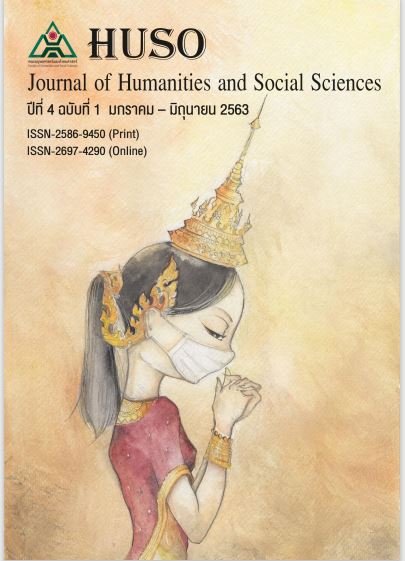นวัตกรรมในสถาบันอุดมศึกษา
Main Article Content
บทคัดย่อ
นวัตกรรมในสถาบันอุดมศึกษาเกี่ยวข้องกับอาจารย์และนักศึกษาเนื่องจากการเปลี่ยนแปลงของ โลกาภิวัตน์ทำให้มหาวิทยาลัยต้องปรับตัวในเรื่องคุณภาพการศึกษามากขึ้น นวัตกรรมทางการศึกษาเป็นเครื่องมือที่ใช้ในการเรียนการสอนรูปแบบใหม่ นวัตกรรมไม่ใช่การวิจัย แต่นวัตกรรมบางเรื่องอาจมีพื้นฐานมาจากงานวิจัย นวัตกรรมสามารถแบ่งออกได้เป็น นวัตกรรมที่นำไปสู่การเปลี่ยนแปลงอย่างฉับพลัน นวัตกรรมแบบค่อยเป็น ค่อยไป นวัตกรรมเชิงสถาปัตยกรรมของผลิตภัณฑ์ และนวัตกรรมแบบก้าวกระโดด ซึ่งผู้สอนสามารถนำนวัตกรรมมาใช้สอนด้วยการสร้างกลยุทธ์ใหม่ ๆ ในการสอน เช่น การใช้กระบวนการทางความคิด การสะท้อนตัวตน การใช้คำถามแบบเปิด-ปิด การสร้างสภาพแวดล้อมการเรียนที่ยืดหยุ่น การใช้การค้นหาปัญหา การเชิญผู้ประกอบการและนักนวัตกรรมบรรยายในชั้นเรียน การให้นักเรียนลองผิดลองถูก การใช้กระบวนการทำความเข้าใจกับปัญหาที่จะแก้ไข โดยแรงขับเคลื่อนนวัตกรรมคือ เทคโนโลยีอุบัติใหม่ การแข่งขันด้านแนวคิดจากลูกค้า พันธมิตรเชิงกลยุทธ์และพนักงาน การอุบัติขึ้นของการเปลี่ยนแปลงของสภาพแวดล้อมภายนอกองค์การ แนวโน้มอนาคตของนวัตกรรมอุดมศึกษาในอีกห้าปีข้างหน้าได้แก่ การใช้ตัวชี้วัดในกระบวนการการศึกษา การออกแบบพื้นที่การเรียนรู้ใหม่ สื่อการสอนและการเรียนรู้ที่สามารถนำกลับมาใช้ใหม่ได้โดยไม่มีค่าใช้จ่าย การเข้าถึงด้วยสหวิทยาการ การปรับวัฒนธรรมองค์กรเพื่อนวัตกรรม เป็นหุ้นส่วนกันระหว่างผู้สอนและผู้เรียน ความท้าทายในเรื่องนวัตกรรมการบริหารอุดมศึกษาได้แก่ การออกแบบสภาพแวดล้อมการเรียนรู้ใหม่เพื่อสนับสนุนการเรียนการสอน การระดมทรัพยากรเพื่อการเข้าถึงที่กว้างขึ้นและการปรับปรุงคุณภาพ การปฏิรูปดิจิทัลเพื่อสนับสนุนการสอนและผู้สอน นโยบายการสร้างหุ้นส่วนความร่วมมือสำหรับการเปลี่ยนแปลงการศึกษา
Article Details
เอกสารอ้างอิง
Fedena. (2019). Innovative Methods of Teaching Strategies: That will help every teacher in the classroom. [Online]. February 25. Available from https://fedena.com/blog/2019/02/innovative-methods-of-teaching-strategies-that-will-help-every-teacher-in-the-classroom.html (Accessed: April 18, 2020).
Guijosa, Christian. (2018). Trends and Challenges in higher education toward 2023. [Online]. August 21. Available from https://observatory.tec.mx/edu-news/trends-and-challenges-in-higher-education-towards-2023 (Accessed: April 18, 2020).
John Brennan, Steve Ryan, and others. (2014). Study on innovation in higher education: final report. [Online]. February. Available from http://www.lse.ac.uk/business-and-consultancy/consulting/assets/documents/study-on-innovation-in-higher-education.pdf (Accessed: April 20, 2020).
Kylliäinen, Julia. (2019). Disruptive Innovation – What is It and How Does It Work? [Online]. November 4. Available from https://www.viima.com/blog/disruptive-innovation?_ga=2.119923400.1144220331.1574844302-1577955596.1567515276 (Accessed April 21, 2020).
Kylliäinen, Julia. (2019). Types of Innovation – The Ultimate Guide with Definitions and Examples. [Online]. October 4. Available from https://www.viima.com/blog/types-of-innovation (Accessed: April 21, 2020).
Lopez, Jorge. (2015). Types of Innovation. [Online]. June 29. Available from https://techblog.constantcontact.com/software-development/types-of-innovation/ (Accessed: April 21, 2020)
Merriam-Webster Dictionary. Definition of innovation. [Online]. Available from: https://www.merriam-webster.com/dictionary/innovation (Accessed: April 18, 2020).
Mission. (2018). Higher Education Innovation: 25 Examples of Excellence. Creating the Future of Education. [Online]. August 3. Available from https://medium.com/the-mission/higher-education-innovation-25-examples-of-excellence-faa66af4105e. (Accessed: April 18, 2020).
O'Sullivan. (2008). Innovation. [Online]. May 29. Available from https://www.sagepub.com/sites/default/files/upm-binaries/23137_Chapter_1.pdf (Accessed: April 18, 2020).
OECD. (2016). Innovating Education and Educating for Innovation: The Power of Digital Technologies and Skills. OECD Publishing, Paris. Available from http://dx.doi.org/10.1787/9789264265097-en. (Accessed: April 22, 2020).
Shulman, Robyn D.(2018). 10 Ways Educators Can Make Classrooms More Innovative. [Online]. November 19. Available from https://www.forbes.com/sites/robynshulman/2018/11/19/10-ways-educators-can-make-classrooms-more-innovative/#4551a3777f87 (Accessed: April 20, 2020).
Singapore News Center. (2019). Higher education institutions in Asia Pacific stand to double the rate of innovation with Artificial intelligence. [Online]. September 23. Available from https://news.microsoft.com/en-sg/2019/09/23/higher-education-institutions-in-asia-pacific-stand-to-double-the-rate-of-innovation-with-artificial-intelligence/ (Accessed: April 19, 2020).
Swanger, Dustin. (2016). Innovation in Higher Education: Can Colleges Really Change? [Online]. June, 2016. Available from https://www.fmcc.edu/about/files/2016/06/Innovation-in-Higher-Education.pdf (Accessed: April 21, 2020).
The State of Innovation in Higher Education. (2018). A Survey of Academic Administrators. [Online]. April 2018. Available from https://olc-wordpress-assets.s3.amazonaws.com/uploads/2018/04/The-State-of-Innovation-in-Higher-Education-A-Survey-of-Academic-Administrators.pdf (Accessed: April 16, 2020).
Tigernix’s Business Blog. (2018). Top 10 issues faced by school administrators. [ Online]. October 26. Available from https://www.tigernix.com/home/blog/top-10-issues-school-administrators (Accessed: April 18, 2020).
U.S. Department of Education. (2004). What do we mean by “Innovation”? [Online]. June 12. Available from https://www2.ed.gov/about/offices/list/oii/about/definition.html (Accessed: April 20,2020).
Uchendu, C. C. (2016) Change Management in Education. In C. P. Akpan, J. E. Okon and V. O. Ebuara (eds.) Fundamentals of Educational Management (pp. 20-48). Calabar: University of Calabar Press.
UNESCO Bangkok Asia and Pacific Regional Bureau for Education. (2011). ICT for higher education: case studies from Asia and the Pacific. UNESCO Digital Library. pp. 1-170.
UNESCO Institute for Information Technologies in Education. (2016). Futures for ICT and Higher Education: Changes Due to the Use of Open Content. UNESCO Digital Library. pp. 12-21.


